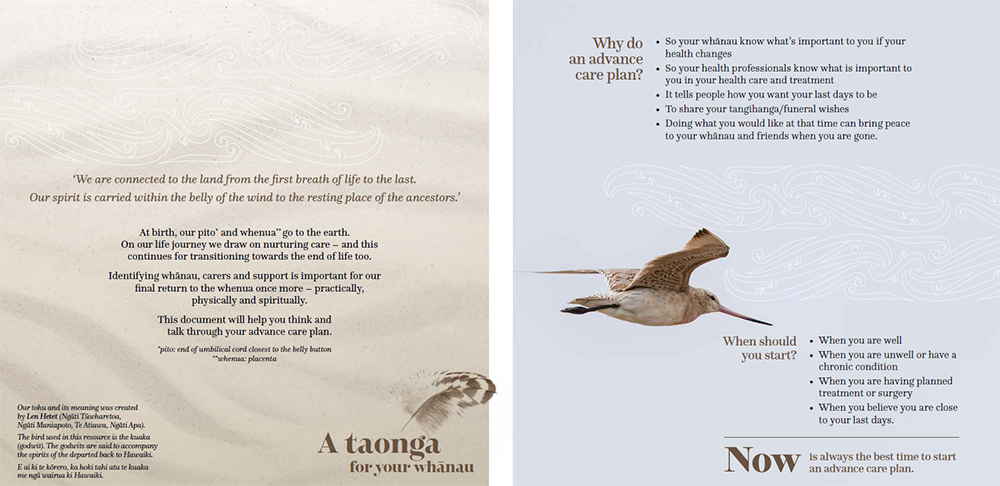ACP updates
ACP updates
On this page
- ACP and Dementia
- Whenua ki te whenua – an advance care planning guide for whānau
- Our Māori ACP Co-Design
ACP and Dementia
The Health Quality & Safety Commission has released a series of videos as part of a campaign focusing on advance care planning and dementia. The videos share the viewpoints and experiences of health care practitioners and those living with dementia. Watch the first in the series below, and click for more information and the full series of videos.
Whenua ki te whenua – an advance care planning guide for whānau

The Health Quality and Safety Commission is proud to launch Whenua ki te whenua – an advance care planning guide for whānau. The guide was co-designed with a Māori advisory group and is a resource for all Aotearoa New Zealand.
It is a document designed to help New Zealanders think and talk through their advance care plans. It encourages people to look at what is important to people, their values and beliefs and consider practical decisions should they become unwell or unable to speak for themselves. It also provides resources and examples of others people’s approaches to advance care planning. For more information on the creation process of Whenua ki te whenua, click here.
- Download Whenua ki te whenua (English) (568 KB, pdf)
- Download Whenua ki te whenua (Te reo Māori) (561 KB, pdf)
- Find more information about the publication on the HQSC site
- To order hard copies at no charge (available in te reo Māori and English) please click here.
Our Māori ACP Co-Design

"We are connected to the land from the first breath of life to our last. Our spirit is carried within the belly of the wind to the resting place of the ancestors."
This proverb is about knowing who you are and where you are from whakapapa (identity). It draws on the caring, nurturing and upbringing of a loved one from birth to death, and the important role that family, friends and carers play.
Burying the pito (umbilical chord) is the traditional Māori practice of connecting a new born baby to the ancestral lands. Through this tikanga (Māori practice), the link is made with Papatūānuku (Earth mother), and role that both whenua the land, and the pito play in a spiritual sense.
Nurturing tamariki through understanding both their everyday and historical connections takes this symbolism to a practical level. This involves learning about home and whānau links — the beginnings of whakapapa and geographical connections to their maunga (mountain), awa (river) and marae tribal place).
The pattern represents the pito of life that connects us to the land. This reinforces the relationship between the newborn child and the land of birth (homeland).
The koruru represent the spiritual ascent to the resting place of our ancestors.
